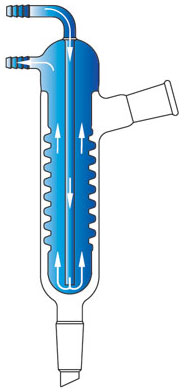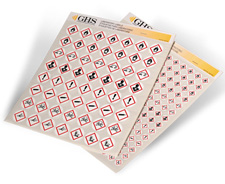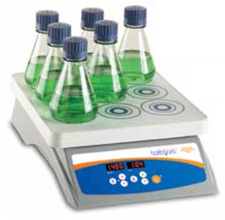| The Home page of ILPI's Safety Data Sheet (SDS) Resource, the leader in SDS information since 1995! | |
| The history and philosophy behind this resource. | |
| A curated collection of books and reference materials concerning Safety Data Sheets and closely related topics. | |
| Paste your plain text SDS into the SDS-Demystifier, and it will be converted into a hypertext-enriched document with links to detailed explanations of each key term. | |
| An extensive list of frequently asked questions about Safety Data Sheets including regulations, content, compliance, and more. | |
| A humorous take on Safety Data Sheet jargon. Fill in the blanks on our entry form to generate a personalized Unsafety Data Sheet to share with your coworkers. | |
| Since 1995, we've maintained this massive curated list of the best places to find Safety Data Sheets on the Internet. | |
| You are here! Way more than a glossary, this hypertext-enhanced resource covers hundreds of SDS-related terms and expert knowledge. Each entry includes both the SDS relevance and links to additional authoritative resources. | |
| Archived results of Safety Data Sheet related polls taken by some of our millions of site visitors | |
| The OSHA regulations behind SDS regulations, including the inspection guidelines and over 400 official interpretations letters under the Hazard Communication Standard | |
| Commercial suppliers of SDS authoring and management software as well as cloud compliance services. | |
| Commercial companies that will create SDS's for your specific needs as well as SDS translation companies. |

Safety signs, banners, and scoreboards? Get yours at Safety Emporium!

Chill out with laboratory condensers from Safety Emporium.
Definition
According to the 2012 version of the OSHA Hazard Communication Standard, 29 CFR 1910.1200 (HCS 2012), a mixture "means a combination or a solution composed of two or more substances in which they do not react".
A chemist defines a mixture as a combination of two or more substances in which each substance retains its own chemical identity and properties.
In general, mixtures have no fixed composition. The amount of one or more components (substances) can usually vary over a wide range.
Additional Info
Mixtures generally fall into one of two categories:
- A homogeneous mixture has uniform chemical composition, appearance and properties throughout. A simple example is air, which is a homogeneous mixture of gases consisting primarily of nitrogen and oxygen. Another example would be dissolving a small amount of sugar in a glass of water. After stirring, every section of the aqueous solution would be identical in composition, appearance and physical properties (such as boiling point, for example).
- A heterogenous mixture has different compositions, appearance and properties at various points in the mixture. A simple example is a chocolate chip cookie; at some points we encounter a chocolate chip and at others we encounter cookie dough. Another example is a mixture of ice and water; at one point we might encounter a solid, but at another we might have a liquid.
An important property of mixtures is that they can (usually) be separated into their individual components without requiring any chemical reactions. For example, we can evaporate our sugar-water solution to obtain pure water or pure sugar. Likewise, we could put our chocolate chip cookie into water to dissolve away the dough and collect pure chocolate chips.
A microscopic view
When chemicals are combined, they can either form a mixture or they can chemically react to form new chemical species. For example, consider atoms A (blue) and B (red). If they do not react chemically, we obtain a mixture:

If each atom of A reacts with exactly one atom of B, we can form a new molecule, AB, that contains one atom of A chemically bonded to one atom of B. This is a chemical reaction because the new material will have different physical and chemical properties than either A or B.

Sometimes, we might form AB but have some A and/or B left over (the reaction might be reversible, or we may have put in more of one component). In these cases, one or more of the starting materials (A and/or B) as well as the new chemical species (AB) will be present in our resulting mixture. This is sometimes called an incomplete reaction:


Get your GHS-compliant labels and signs from Safety Emporium.
SDS Relevance
HCS 2012, introduced the concept of hazard classification in which both the health and physical hazards of the material must be assigned using a rigorous process outlined in Appendix A for health hazards and in Appendix B for physical hazards. Appendix A lists general considerations for the classification of mixtures in paragraph A.0.4.1:
(a) Where test data are available for the complete mixture, the classification of the mixture will always be based on those data;
Where test data are not available for the mixture itself, the bridging principles designated in each health hazard chapter of this appendix shall be considered for classification of the mixture;
If test data are not available for the mixture itself, and the available information is not sufficient to allow application of the above-mentioned bridging principles, then the method(s) described in each chapter for estimating the hazards based on the information known will be applied to classify the mixture (e.g., application of cut-off values/concentration limits).
Manufacturers are required to perform this hazard classification and as well as issue a Safety Data Sheet and GHS-compliant label. The process can be quite involved for mixtures so professional assistance is suggested if this is beyond the manufacturer's expertise.
Further Reading

Safety Emporium has all kinds of lab equipment such as stirring hot plates.